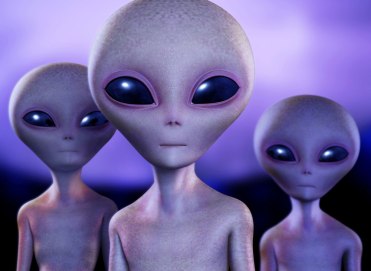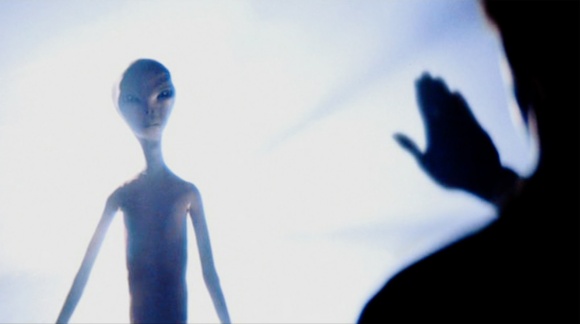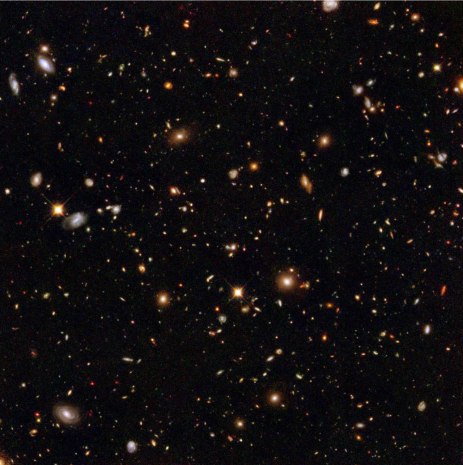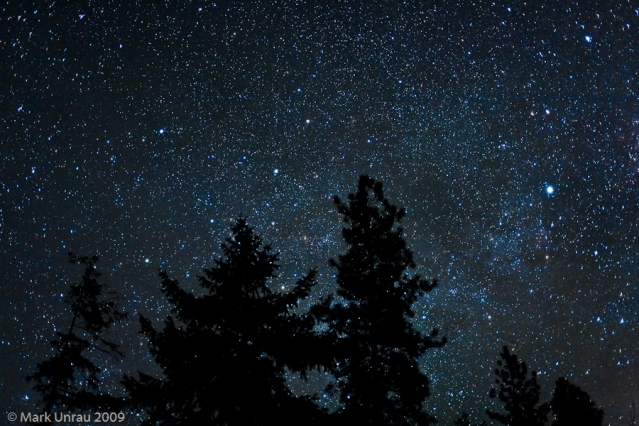
I’m not sayin’ this Coke machine was made by aliens…but it was aliens.
Ok, before I start I would just like to say that yes, I did borrow the idea for the title of this post from the extremely creative movie title Cowboys and Aliens, sue me.
Anyway, I saw this strange, alien-looking Coke machine the other day. It wasn’t the first time that I had seen one, but on this particular occasion it got me thinking. No, not about coke or crazy soda mixtures (don’t do grape sprite), but about aliens. That’s right, ALIENS.

Common perception of aliens
The picture above represents what people commonly think of when they hear the word “alien.” Have you ever wondered why? Of course, every stereotype has its roots, and the same is true for aliens. Without getting into huge amounts of detail, the basic story of why we think of aliens like this is as follows:
During the 1950’s and 60’s there was a wave of “flying saucer” sightings all over the nation. Among the hundreds, if not thousands of sightings during this time, there were also scattered reports of people witnessing these saucers landing, or crash landing. A few of these reports included people witnessing the occupants of these flying saucers exiting the craft and walking around. The most well documented and publicized case was the Kelly-Hopkinsville encounter in 1955, which included dozens of eye-witnesses (including several policemen and a state trooper), remarkable individual corroboration, and extensive investigation by numerous government agencies. This incident, and other similar incidents, caught media attention, and journalists took the eye-witnesses descriptions and turned them into the “little green men” that most people associate with aliens today. This media depiction soon became a Hollywood depiction, and thus our stereotypical alien was born.

Close Encounters of the Third Kind
Does all of this alien mumbo jumbo sound like crazy-talk to you? Apparently it’s not so crazy. A recent survey for National Geographic found that “thirty-six percent of Americans think aliens have visited Earth, and almost 80 percent believe the government has kept information about UFOs a secret from the public (Cline USNews.com).
Now, I have always considered myself a very logical person, and yet, I have always believed in extraterrestrial life. “Ha! You are a fool,” I can hear you say. That may be true, but first, let me explain my reasoning.
I should start by saying that, believing in the possibility of extraterrestrial life is not the same as believing in little green men with laser guns (see Mars Attacks). As I have said above, this is simply the stereotypical media portrayal of extraterrestrials (aliens). The word extraterrestrial is defined as “outside, or originating outside, the limits of the earth (dictionary.com).” By this definition, if we found single celled organisms on Mars, or more likely, in the subsurface oceans of Jupiter’s moon Europa, they would be considered extraterrestrials, or ALIENS!!!
I can already hear your rebuttal, “Ok, fine, technically that is true, but I’m talking about REAL aliens, the ones you see in movies. THOSE are not real.”
Again, I would have to disagree, and in fact, I believe that it is almost a certainty that such lifeforms do exist. Let me explain. When people say that they don’t believe in aliens (extraterrestrials, not certain landscapers), what they are really saying is that they don’t believe that intelligent, complex, multi-cellular extraterrestrial organisms exist. And I would agree that this would seem exceedingly unlikely given most people’s limited knowledge of the universe. Let me enlighten you non-believers.

Hubble Ultra Deep Field
The picture above is an image taken by the Hubble space telescope called the Ultra Deep Field. The Hubble was pointed at a very small, dark section of the night sky, and gathered data from September 24, 2003, through January 16, 2004. What this image reveals is that even in an apparently empty section of space, we have evidence of over 10,000 galaxies! And this is just one very small section of space viewed from earth.
My point is that we can use this data to estimate the number of galaxies in the visible universe, which is thought to be about 100 to 200 billion galaxies. Using what we know about our own galaxy, the Milky Way, and our neighboring galaxies, recent estimates indicate that each galaxy can contain as many as 500 billion stars. If you do the math, in this case 200 billion galaxies x 500 billion stars in each galaxy, you get a staggering total of 1^23 stars in the visible universe. To those who are scientifically challenged, that is a 1 with 23 zeros after it. Which looks like 100000000000000000000000 when written out. Our sun is just one of these stars. Our entire solar system, all eight planets (or 9 for you old timers), all revolve around just one of these unfathomable number of stars.
“What the hell are you talking about,” I can hear you say. “What does this have to do with aliens?”
This has everything to do with aliens. If we assume that the evolution of complex, intelligent life is extremely rare, we also have to keep in mind the extraordinary vastness of the universe. If intelligent life could evolve in our solar system, and there are 1^23 potential solar systems in the universe, intelligent life may not be that rare.
There is a very high probability of intelligent life evolving in our universe due to the sheer unimaginable vastness of the universe.
The sheer vastness of the universe makes statistically rare things, like the evolution of intelligent life, much more probable. How vast is our universe? Nobody knows, it could be infinite. The farthest object we can observe is 14 billion light years away. Meaning it takes light going 299,792,458 m/s (or 670,616,629 mph) 14 billion years to reach us. Yes, it’s that big.
 And if you don’t believe me, believe Stephen Hawking when he says, “to my mathematical brain, the numbers alone make thinking about aliens perfectly rational. The real challenge is to work out what aliens might actually be like.”
And if you don’t believe me, believe Stephen Hawking when he says, “to my mathematical brain, the numbers alone make thinking about aliens perfectly rational. The real challenge is to work out what aliens might actually be like.”
Are we really naive enough to think that we are alone in the universe?
What do you think? Does the sheer enormity of the universe increase the odds of intelligent life? Or are we really one of a kind?






